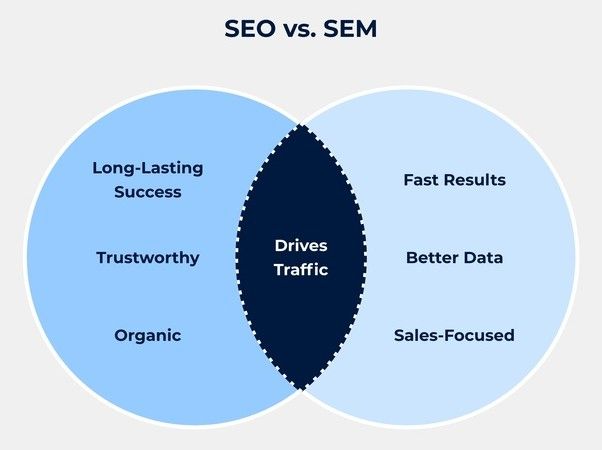Advertisements
What are the main differences between SEO and SEM? SEO (Search Engine Optimization) and SEM (Search Engine Marketing) are both strategies used to improve a website’s visibility on search engine results pages (SERPs), but they differ in their approaches and tactics.
Main differences between SEO and SEM

Definition
- SEO Focuses on optimizing a website’s content, structure, and HTML code to improve its organic (unpaid) visibility on search engine results pages.
- SEM Involves using paid advertising methods, such as pay-per-click (PPC) campaigns, to increase a website’s visibility on search engine results pages.
Nature
- SEO is a long-term strategy that aims to improve a website’s ranking organically over time by optimizing various on-page and off-page factors.
- SEM is a more immediate strategy that involves paying for advertising space on search engine results pages to increase visibility and drive traffic to a website.
Cost
- SEO typically requires time and resources upfront but can provide long-term benefits without ongoing advertising costs.
- SEM involves direct advertising costs, as advertisers pay for each click on their ads or for impressions (views) of their ads, depending on the advertising model used.
Visibility
- SEO aims to improve a website’s visibility in organic search results, which appear below-paid advertisements on search engine results pages.
- SEM aims to improve a website’s visibility through paid advertisements that appear above or alongside organic search results on search engine results pages.
Control
- SEO website owners have limited control over when and where their website appears in organic search results, as rankings are influenced by various factors, including search engine algorithms and competitors’ strategies.
- SEM advertisers have more control over their advertisements’ placement, targeting options, and budget, allowing greater precision in reaching specific audiences.
While both SEO and SEM aim to increase a website’s visibility in search engine results, they differ in their approaches, costs, timelines, and emphasis on organic versus paid strategies. Integrating both can create a comprehensive search marketing strategy that maximizes exposure and traffic for a website.


